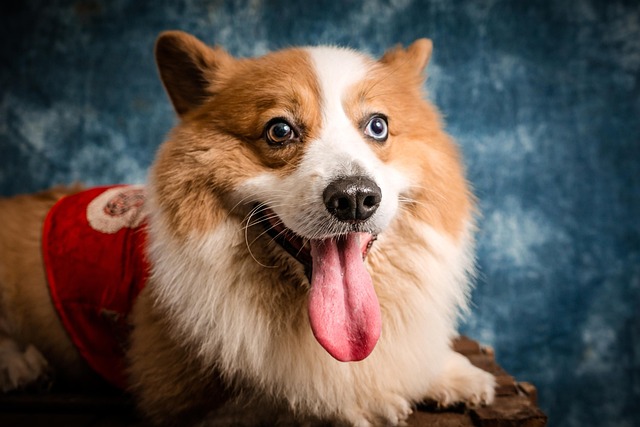
How do i train my dog to be obedient?
Watching your dog dart across the park ignoring your calls isn’t just frustrating—it can put them at risk near busy streets or public spaces.
The excitement, anxiety, or unease of dogs are common problems faced by many owners, especially in special occasions such as when guests arrive at home, encountering other dogs while going for a walk, or during thunderstorms. In these situations, dogs may exhibit excessive barking, jumping, running, and even destructive behavior. So, how to quickly calm down dogs when they are emotionally excited?
Firstly, understanding the reasons for dogs' emotional excitement is the key to solving the problem. The emotional fluctuations of dogs are usually closely related to their instincts, environmental stimuli, and emotional states. For example, when dogs see other animals or strangers, their hunting or protective instincts may be triggered, leading to excitement or anxiety. In thunderstorm weather, loud thunder or lightning may make dogs feel scared. In addition, some dogs may exhibit restless behavior due to separation anxiety, lack of exercise or mental stimulation. Understanding the reasons for dogs' emotional excitement can help us take more targeted actions.
When a dog is emotionally agitated, the owner's response is crucial. Dogs are very sensitive animals, they can keenly perceive changes in their owners' emotions. If the owner shows tension, anxiety, or even anger when the dog is excited or anxious, this emotion may be transmitted to the dog, exacerbating their discomfort. Therefore, maintaining calmness is the first step in helping dogs calm down. Owners can convey a calm atmosphere through deep breathing, relaxed body language, and gentle tone, making their dogs feel safe and supported.
One quick way to calm a dog is to use distraction techniques. When dogs show excessive excitement or anxiety, owners can alleviate their emotions by guiding them to shift their attention to other things. For example, dogs can use their favorite toys, snacks, or training commands to attract their attention. For some well-trained dogs, simple commands such as "sit down" or "stay" can help them refocus and gradually calm down. In addition, some puzzle toys or olfactory games can also help dogs' brains shift away from emotional excitement and enter a more relaxed state.

Touch and physical contact are another effective way. Many dogs seek comfort through physical contact when they feel uneasy. Owners can try gently stroking the dog's back, chest, or ears, which usually make the dog feel comfortable and relaxed. For some particularly anxious dogs, gently pressing their bodies or using "hugging" techniques (such as gently wrapping their hands around the dog's body) can also help them feel safe. However, it should be noted that not all dogs enjoy being touched, especially when they are emotionally excited. Therefore, the owner needs to adjust their behavior based on the dog's reaction to avoid making the dog feel more uneasy.
Environmental adjustments are equally important. If a dog's emotional excitement is caused by external stimuli, such as noise outside the door or the presence of other animals, the owner can try changing the environment to reduce these stimuli. For example, windows can be closed or curtains can be drawn to reduce external noise and visual stimulation; Or take the dogs to a quiet room and keep them away from the source of emotional fluctuations. For some dogs that are particularly sensitive to thunder or fireworks, they can consider using noise cancelling earmuffs or soothing vests, which can help dogs feel safer.
Diet and health issues may also affect the emotional state of dogs. Some dogs may exhibit excessive excitement or anxiety due to imbalanced diet or health issues. For example, excessive intake of sugar or caffeine may cause emotional fluctuations in dogs. Therefore, ensuring a healthy diet for dogs and avoiding excessive food or snacks before bedtime can help them relax better. In addition, some natural nutritional supplements, such as products containing melatonin or chamomile, have also been proven to have a certain effect on relieving anxiety in dogs. However, it is recommended to consult a veterinarian before using these products.
Behavioral problems in dogs often do not form overnight, and solving these problems also requires time and effort. By observing the behavior patterns of dogs, understanding their needs, and taking appropriate measures, owners can gradually help dogs learn to stay calm when they are emotionally excited. At the same time, owners also need to pay attention to their emotional state, as anxious or irritable emotions may be transmitted to dogs, exacerbating their anxiety.

Watching your dog dart across the park ignoring your calls isn’t just frustrating—it can put them at risk near busy streets or public spaces.

New puppy owners often find themselves rushing to clean up accidents before they set in, and that’s where puppy pad training becomes a game-changer.

If you've noticed your dog's waistline disappearing and your veterinarian has mentioned those few extra pounds, your first instinct might be to simply reduce the amount of food in their bowl.

Training a dog to use a designated spot indoors isn’t as daunting as many new owners fear, but it does take consistency and an understanding of your pet’s needs.

That moment of dread on a walk is all too familiar for many new dog owners. You see another dog approaching down the sidewalk of your neighborhood

If the sight of another dog on your neighborhood walk makes your heart sink as your own dog erupts into a frenzy of barking and lunging, you're not alone.